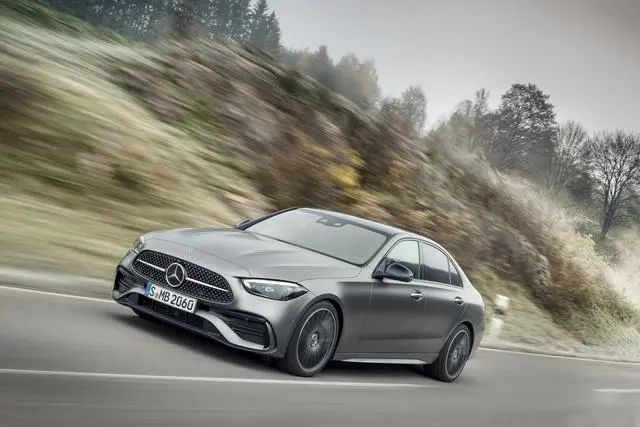*Author: Wang Congsi
Recently, Mercedes-Benz released some news about the all-new generation AMG C63. As previously rumored, the 63 series will no longer have a V8 engine. Instead, it will use the M139 engine, which is derived from the same engine used in the A45, but with a series of electrified equipment added.
Many people fell in love with the C63 from the W204, which was equipped with a 6.2L naturally aspirated V8 engine. No one can resist the “roar” of eight cylinders working at the same time. But can the 63 series without a V8 still be as exciting?
First, let’s take a look at this “half engine” – the M139. We say “half engine” not to diminish its value, but because compared to the previous C63, it has only half as many cylinders. Undeniably, the M139 is a monster heart armed to the teeth. Whether it is the basic design concept, processing technology, or each technical detail, AMG has presented us with an engine that can balance power, fuel efficiency, and environmental protection.
To better meet the power needs of the C63, the output power of the M139 has reached 330 kW, which is 20 kW greater than that of the A45 S. Don’t forget, this is a mass-produced engine with only 2.0 liters of displacement.
However, how could passionate car enthusiasts be satisfied with just over 400 horsepower? This is the next generation of the C63, and AMG will not disappoint the audience. So, in the era of electrification, let electric motors make up for the four cylinders we lost.
Highlights of Electrification Technology
BSG
The M139 engine of the C63 is equipped with a 10 kW BSG motor. This 48V mild hybrid technology is not unfamiliar. Many car companies, including Mercedes-Benz, have already used it. Although the power of this motor is not large, it can still provide some power assistance when necessary and recover energy during deceleration to charge the battery. In addition, the BSG motor can start and stop the engine more quickly and performs better in scenarios where the engine needs to be frequently started.
MGU-H
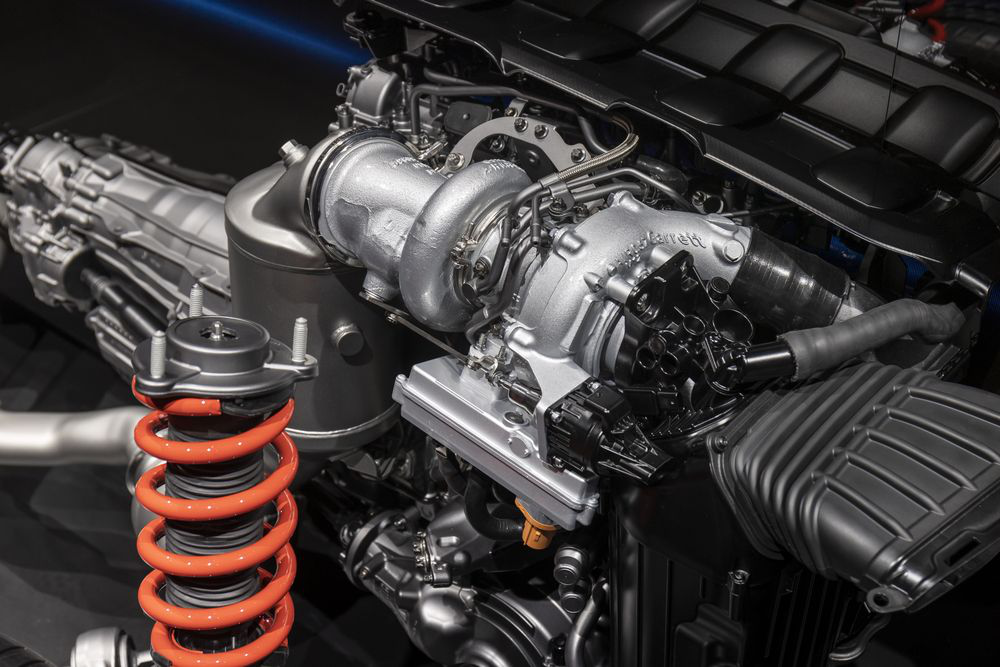
Friends who know about racing must know that the AMG team has dominated the F1 circuit for nearly seven years. This time, AMG has really brought the technology from the race track to mass-produced cars.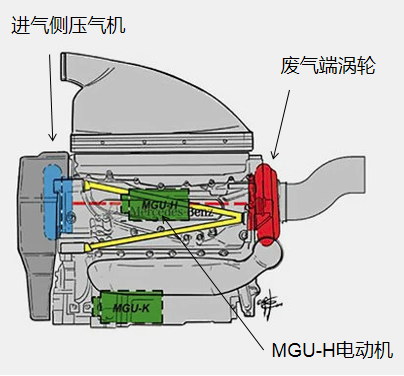
On the race track, every ounce of fuel must be used to its maximum potential. The MGU-H system was added to the turbocharger of the F1 engine under the new rules. The biggest difference between it and a regular turbo is an electric motor added between the pressure compressor on the intake side and the turbine on the exhaust side. At low speeds, the motor drives the compressor to accelerate rotation, reducing turbo lag. At high speeds, surplus energy in the exhaust can drive the motor to charge the battery. This solution balances power and energy consumption.
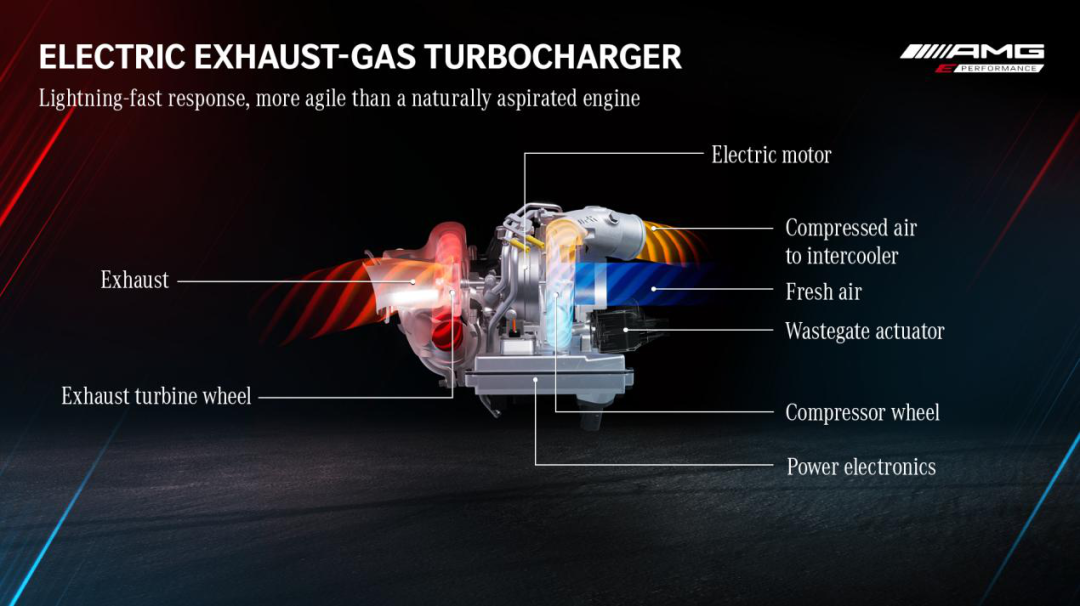
The turbo developed by Mercedes and Garrett on the M139 engine is not simple. There is an electric motor between the compressor and the exhaust turbine, similar to the MGU-H system in the F1 engine. Thanks to the motor’s fast response and precise control, the engine can bid farewell to turbo lag. Additionally, the system that uses a 400V power supply system, like the MGU-H, will give the new generation of AMG C63’s electric turbo a more responsive and higher speed output than conventional e-turbos powered by a 48V drive.
Rear-Mounted Motor
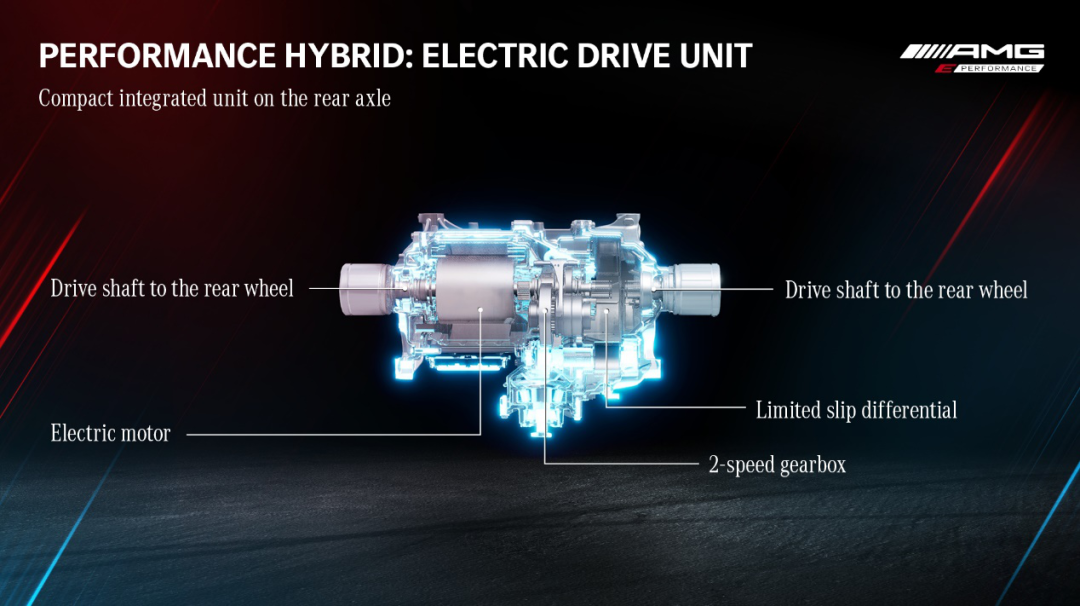
If the BSG motor and electric turbo were only garnish, the P3 motor integrated into the rear axle could be considered the main course. After all, 150 kW output power is enough for a regular Mercedes C-Class to have the “260” badge. If the transmission shaft is disconnected, short-distance trips, such as grocery shopping, might be performed purely electrically. Additionally, there is a two-speed gearbox on the rear axle. It shifts into second gear when the car travels faster than 140 km/h, using a higher transmission ratio at low speeds to further increase the torque of the electric motor. At higher speeds, a smaller transmission ratio is used, allowing the electric motor to work over a wider speed range.
Cloud Guessing Testing Impressions
The driving experience of this electric performance car is hard to imagine. However, the combination of the engine and electric motor gives the car high flexibility in its power system. The 150 kW rear-mounted motor is adequate for the car to travel short distances purely on electric power. In the near future, owners of the C63 can also drive quietly into their neighborhoods at night.When the driver puts the pedal to the metal, the 330 kW + 150 W of power is under their control, and they don’t need to worry about any turbo lag or “slow” shifting processes. With the assistance of electrification, all the shortcomings of the internal combustion engine can be compensated for, leaving the driver with only linear and rapid acceleration.
Summary and comments
Based on both a rational and emotional perspective, I would like to evaluate the power configuration of the new generation C63.
From a rational perspective, it must be acknowledged that the electrified C63 with its additional power will be a more powerful and easier to control performance machine, with a powerful engine that takes into account both power and response. The rear motor is the icing on the cake. In the electrified era, C63’s absolute power is not the focus of our concern, but rather the overall performance during passionate driving.
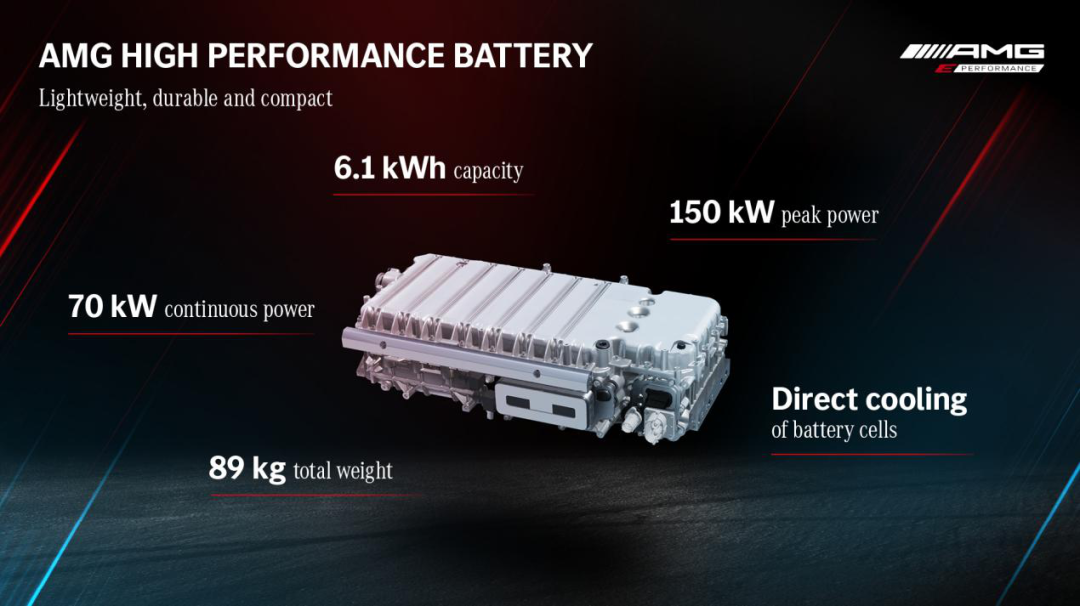
The emergence of electric motors has to some extent compensated for the shortcomings of the internal combustion engine, but at the same time has brought a heavy battery electric control system. 89 kg was spent for a battery capacity of 6.1 degrees, with a continuous output power limit of 70 kW, and only a peak power output of 150 kW. The limited output power causes the rear axle motor to be unable to work “seriously” for a long period of time, so the overall power performance will certainly be discounted. Moreover, this struggling 6.1 degree battery might not last long enough during full throttle driving. Perhaps, an empty battery can only help balance the weight distribution of the entire vehicle. And, for performance cars, ” added weight” is definitely not a good thing.
From an emotional perspective, the downsized engine and cylinders in addition to the various exhaust emission restrictions might have reduced the genuine engine roar experience by an unknown degree. Maybe the electronic sounds emanating from the speakers could provide some consolation, but what’s fake is always fake. In addition, for users who care about face value, they may face the ridicule of C180 owners saying, “Isn’t your ‘C’ also a four-cylinder?”
In any case, electrified performance cars in the electrification era are still very exciting, and I think Mercedes-Benz’s engineering prowess will give us car enthusiasts a satisfactory answer. Technological progress will solve historical problems.
This article is a translation by ChatGPT of a Chinese report from 42HOW. If you have any questions about it, please email bd@42how.com.
